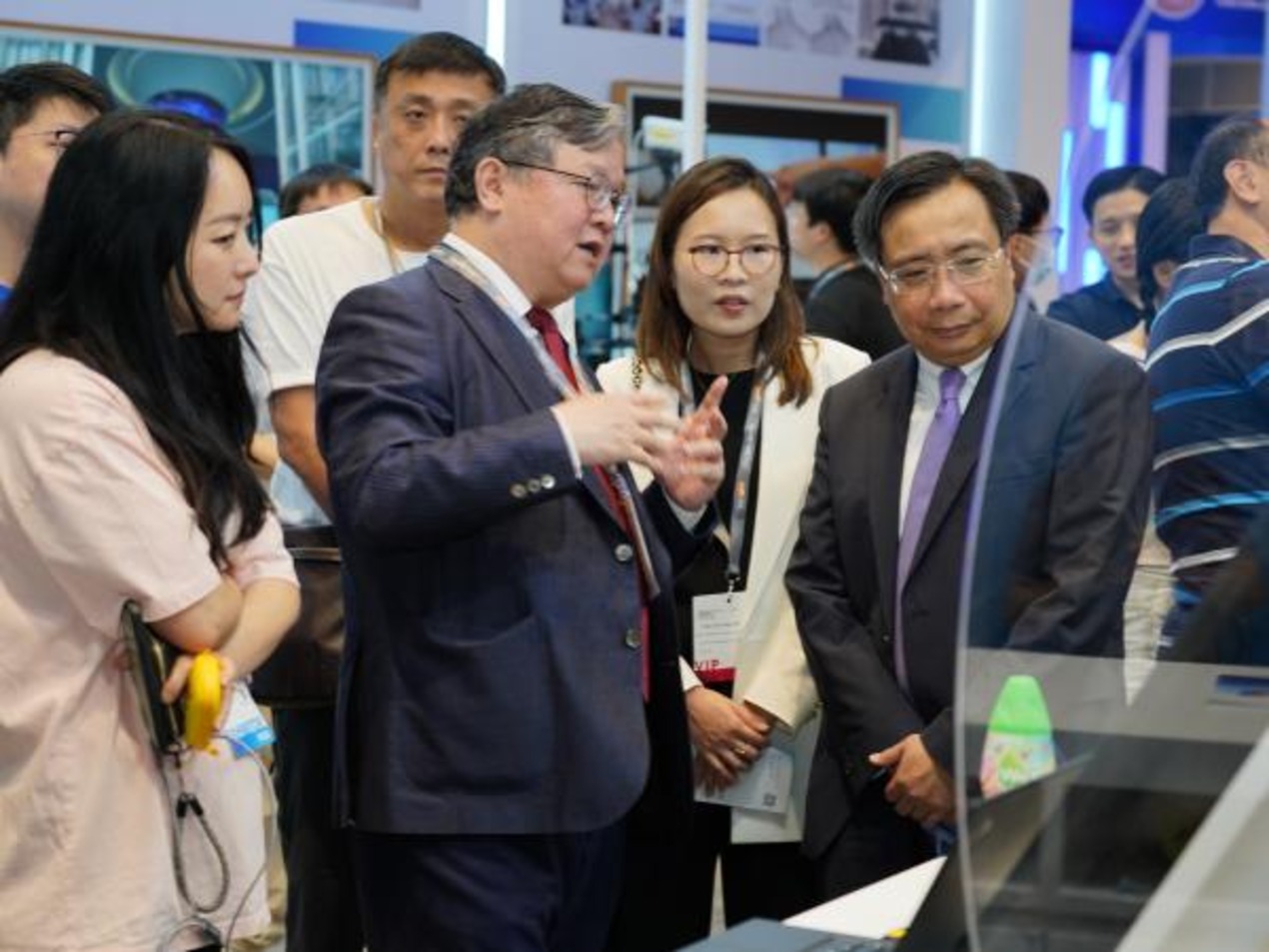
The flow of money across banks and borders underpins the global trade and commerce. And it is SWIFT’s network which enables financial institutions around the world to securely transmit and receive standardised messages on financial transactions and hence, make cross-border payments.
SWIFT or the Society for Worldwide Interbank Financial Telecommunication is a global member-owned cooperative, headquartered in Belgium. Its messaging platform, products and services connect more than 11,000 banking and securities organisations, market infrastructures and corporate customers in over 200 countries and territories.
SWIFT has become the industry standard for syntax in financial messages. Messages formatted to SWIFT standards can be read by, and processed by, many well-known financial processing systems, whether or not the message travelled over the SWIFT network.
Currently, the landscape is witnessing rapid change, with innovations coming from SWIFT, as well as from various other players in the financial ecosystem.
OpenGov caught up with Mr. Christian Sarafidis, Chief Marketing Officer and Executive Committee, SWIFT while he was in Singapore for the SWIFT gpi Industry Challenge for FinTech startups to build additional innovative overlay services on top of the SWIFT gpi platform. SWIFT gpi (global payments innovation) is a new standard for cross-border payments, available since January 2017, that combines real-time payments tracking with the certainty of same-day settlement. Since it became available in January 2017, over 110 global transaction banks have come onboard.
Mr. Sarafidis was previously Head of Western Europe, Middle East and Africa and Deputy Chief Executive, EMEA. Prior to joining SWIFT, he held senior executive positions for several multinational finance and technology groups. In wide-ranging discussion, he talked about different facets of the ongoing FinTech revolution and SWIFT’s role in it.
A time of transformation in cross-border payments
The basic mechanism for international payments has remained the same for decades. A correspondent bank[1] provides services on behalf of another overseas financial institution through a correspondent account (Nostro/ Vostro accounts). Correspondent accounts are established through bilateral agreements between the two banks.
Mr. Sarafidis said that correspondent banking has been extremely conservative for many years. But now we’re in the middle of the biggest transformation that has ever happened in the area.
But why now?
It is a combination of different factors. The first is customer experience. Clients are demanding a better experience in cross-border payments.
They want greater transparency. They want to have clarity on the fees. They want to know the speed of transactions and they want traceability. In some industries, such as the transport industry, by using a reference number, we can find out exactly where the parcel is. In payments, that degree of transparency is not there. And it has been like this for 30 years. Also, cross-border payments can take from 2 to 5 days today. Customers want faster payments.
The second important factor is the push from regulators, who also want more transparency, while the third one is the pressure from the FinTech companies who are coming up with disruptive solutions (such as Ripple), which potentially can disintermediate banks.
The SWIFT gpi (global payments innovation) is a response to all of these factors. It is an attempt to significantly improve transparency and speed.
“gpi is not something that SWIFT has created, it is something we co-created with the banking community. So we invited all the banks around the world, we sat together and together we defined together a rule book. Everybody, when they subscribe to gpi, they commit to respect the rule book,” Mr. Sarafidis explained.
One of the key elements of the gpi is the Unique End-to-End Transaction Reference (UETR). A payment transaction typically involves multiple messages, exchanged between different parties involved in the end-to-end payments chain. The UETR, which is generated by the the gpi instructing bank (the first gpi bank in the payment chain) when initiating a payment, enables the unique identification and tracking of the lifecycle of the transaction.
SWIFT has invested in this new platform in a way that is standards-agnostic. As the financial community migrates to ISO 200022 [2], the same concept of gpi can be used.
More than 100 banks have committed to use gpi. Twenty are already live and sending tens of thousands of messages already. Around a third of the transactions are being settled in below half an hour and more than half of the transactions are completed within 2 hours, which is a significant improvement over the existing systems.
Benefits for banks and corporates
Using gpi, the banks are not only able to offer a better experience to their customers, the corporates, but they can also improve the efficiency of their investigations.
“When corporates call in to try to identify the problem with their payments, they need to contact the first intermediary, who contacts the next intermediary etc., on to the beneficiary bank. It is very cumbersome and takes a lot of time. Thanks to the concept of the payment tracker, we can really gain savings on the operational side of the banks,” Mr. Sarafidis explained.
Corporates can enjoy benefits in their supply chain. In the supply chain by knowing exactly where the payment, is they know when they can release the goods for the shipment as opposed to today, where there is an uncertainty regarding when the payment is going to arrive.
Their liquidity and FX[3] (forex or foreign exchange) risk improve dramatically because the transaction is settled on the same day. Today they need to hedge the FX rate because they don’t know exactly when the effective date of the settlement is going to be.
Support for smaller banks
To facilitate adoption by smaller banks with resource constraints, SWIFT has defined some packages, which Mr. Sarafidis described as little boxes that the bank can put between the back-office and SWIFT. That takes out a lot of the complexity and reduces the required investment.
Mr. Sarafidis told us that this year, as part of the annual standards release at SWIFT in November, UETR is going to become mandatory on the receiving side. Every bank in the world will have to be able to process a UETR. This extends the traceability by one leg.
There are also ongoing discussions (not been approved yet) to mandate the use of the UETR on the sending side also, for the standards release next year, in 2018. The decision will ultimately be taken the banks.
Working with regulators
The regulators are trying hard to combat fraud. In the past, one payment generated several messages. It was difficult to track them and detect fraud. Now, with the UETR in the gpi, it is easy to move from message to a transaction.
Banks try to detect fraud at the edge of the payment ecosystem. SWIFT decided to take a step from the centre. So, the board of SWIFT has decided to work on an intelligent fraud detection system in the cloud. The solution will come up next year.
Another element is a stop and recall payment feature in the second phase of gpi. Today, if a bank detects fraud, it is extremely difficult to stop the payment because they don’t know where the payment is, they don’t have agreements with every bank in the chain. This feature, when available, will make it much easier to stop or recall a payment.
Cybersecurity
Security is always a high priority issue for financial institutions. There is always a priority for banks to invest in security. With events like the Bangladesh Bank heist (hackers issued instructions to transfer nearly US$1 billion from the central bank of Bangladesh; SWIFT’s network was not compromised) in February 2016, cybersecurity has moved to the top of the agenda.
In addition to investing in its own systems, as an industry cooperative, SWIFT is committed to playing an important role in reinforcing and safeguarding the security of the wider ecosystem.
Therefore, SWIFT came up with a global programme, called the Customer Security Programme or CSP. The fraud detection discussed earlier is one the streams under CSP.
But the CSP is essentially about helping banks to raise the bar. To do so, SWIFT published 27 controls in the SWIFT Customer Security Controls Framework. Sixteen of these controls are mandatory and will help establish a baseline.
By the end of this year, there will be a self-attestation process, wherein banks need to express that they are compliant or that they will be compliant by a specific date. They will have until end of next year to be fully compliant with 16 controls. A quality assurance programme, to effectively evaluate the level of compliance with these 16 controls, is under discussion at SWIFT.
Disruption and innovation
We asked Mr. Sarafidis how SWIFT is dealing with the disruptive environment today.
“As the innovative incumbent, we want to absorb the technology. If you look back 30 years, we have passed through many different cycles of innovation. We started by killing the Telex[4], we created the X.25 network, then there was the Internet. We’ve managed to absorb all these new technologies. What’s going on now is exactly the same thing. We want to innovate collectively. gpi is an example of this. We created it together with the banks. Similarly, we see the FinTechs add value on top of gpi,” Mr. Sarafidis replied.
SWIFT has set up sandboxes for many different technologies, such as Blockchain or DLT (Distributed Ledger technologies) and APIs (Application Programming Interfaces) among others.
SWIFT is developing a proof of concept (PoC) application in collaboration with global banks, that will test whether DLT can be used by banks to improve the reconciliation of their nostro accounts in real time, optimising their global liquidity. The results of the PoC will be presented at Sibos[5] (Swift International Banking Operations Seminar) in Toronto in October.
SWIFT has been working to other DLT-related PoCs too. One PoC aims to demonstrate the benefits of DLTs by building an SSI (Standing Settlement Instructions) database for OTC (Over the counter) markets in a reference data context in which there are no data confidentiality concerns. There was another PoC showcased last year on using smart contracts in the bond lifecycle.
“Our ambition with this is to be pragmatic, to address pain points for the bank to create value and to collaborate with the FinTechs to see how we can do this together,” Mr. Sarafidis said.
The API sandbox opens up the SWIFT ecosystem. It means that banks and FinTech companies do not need to be connected to the production network of SWIFT. They can connect to the API sandbox and experiment with the tracker etc.
In addition, the SWIFT Institute is delivering grants in collaboration with academia to conduct research and produce studies on relevant topics from the financial services industry. Recently the Institute released a report on the implications of public APIs’ adoption in the financial services sector and the key challenges and opportunities that open APIs pose for the banking sector in the UK and the EU following the introduction of the Open Banking Working Group (OBWG) and Second Payments Services Directive (PSD2) regulatory frameworks.
SWIFT plays a highly critical role when it comes to innovation, in terms of facilitating the creation and implementation of standards. It is not just the Registration authority for several ISO standards. As a global industry cooperative, it is in ideal position to facilitate the creation of standards for new technologies or for the standardised implementation of new regulations.
For instance, PSD2 sets requirements for common and secure open standards of communication for the purpose of identification, authentication, notification, and information. APIs will be the technical means that allow the banks to fulfil the specifications of PSD2. But every bank will come up with their own APIs. There is a need for common standards there.
ISO 20022 is emerging as the preferred choice of messaging standard for market infrastructures around the world. As ISO 20022 implementations proliferate, there is variability in the ways in which ISO 20022 is deployed, in terms of message versions, market practice rules and release cycles. The SWIFT Standards’ Harmonisation Charter sets out a series of measures designed to drive harmonisation of the rollout of ISO 20022.
Mr. Sarafidis said, “This is SWIFT’s value proposition. By providing platforms, bringing in standards and building sandboxes, we are inviting the community to innovate.”
[1]Example demonstrating how correspondent banking works from Wikipedia: “A customer of Wells Fargo Bank in Minneapolis might wish to pay a German firm €1,000,000 for machinery the customer has purchased. Wells Fargo has a correspondent banking relationship with Deutsche Bank in Frankfurt and the banks agree that, at an exchange rate of $1.30 to one euro, this is equivalent to US$1,300,000 and Wells Fargo's balance or credit with Deutsche Bank is at least US$1,300,000 / €1,000,000. Wells Fargo takes the $1,300,000 out of the customer's bank account, and instructs Deutsche Bank to take US$1,300,000 / €1,000,000 out of Wells Fargo's correspondent account at Deutsche Bank and pay the euros to the German firm's account. The customer receives its machinery and the supplier has its money (in euros).”
[2] A standard for electronic messaging between financial institutions. A global and open standard, ISO 20022 is not controlled by a single interest: it can be used by anyone in the industry and implemented on any network.
[3] FX risk exists when a financial transaction is denominated in a currency other than that of the base currency of the company. The risk is that there may be an adverse movement in the exchange rate of the denomination currency in relation to the base currency before the date when the transaction is completed.
[4] Before SWIFT, Telex was the only available means of message confirmation for international funds transfer. Telex was hampered by low speed, security concerns, and a free message format. Telex did not have a unified system of codes like SWIFT to name banks and describe transactions.
[5] SIBOS is an annual banking and financial conference organised by SWIFT, attended by over 8000 financial institutions.
















